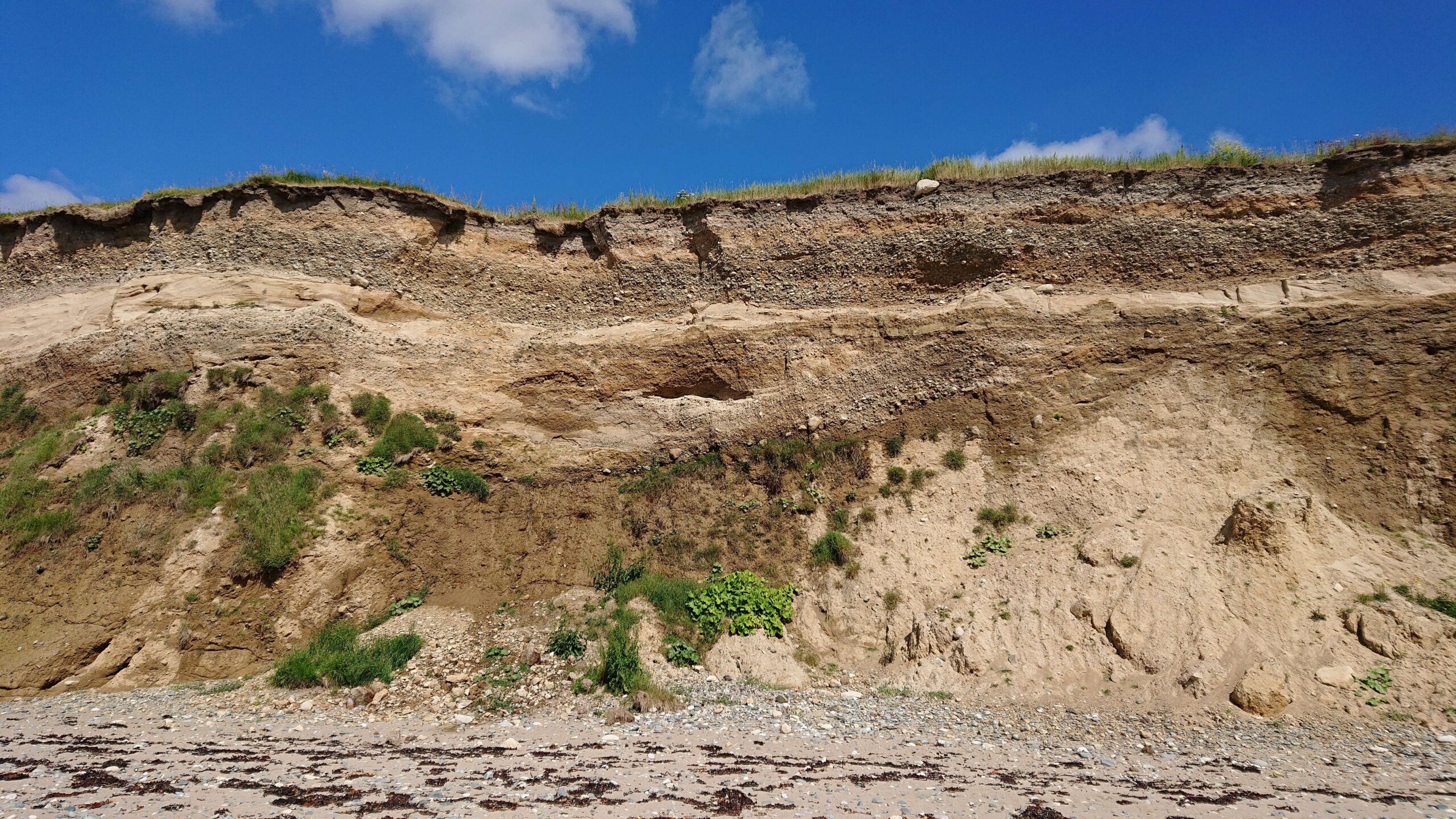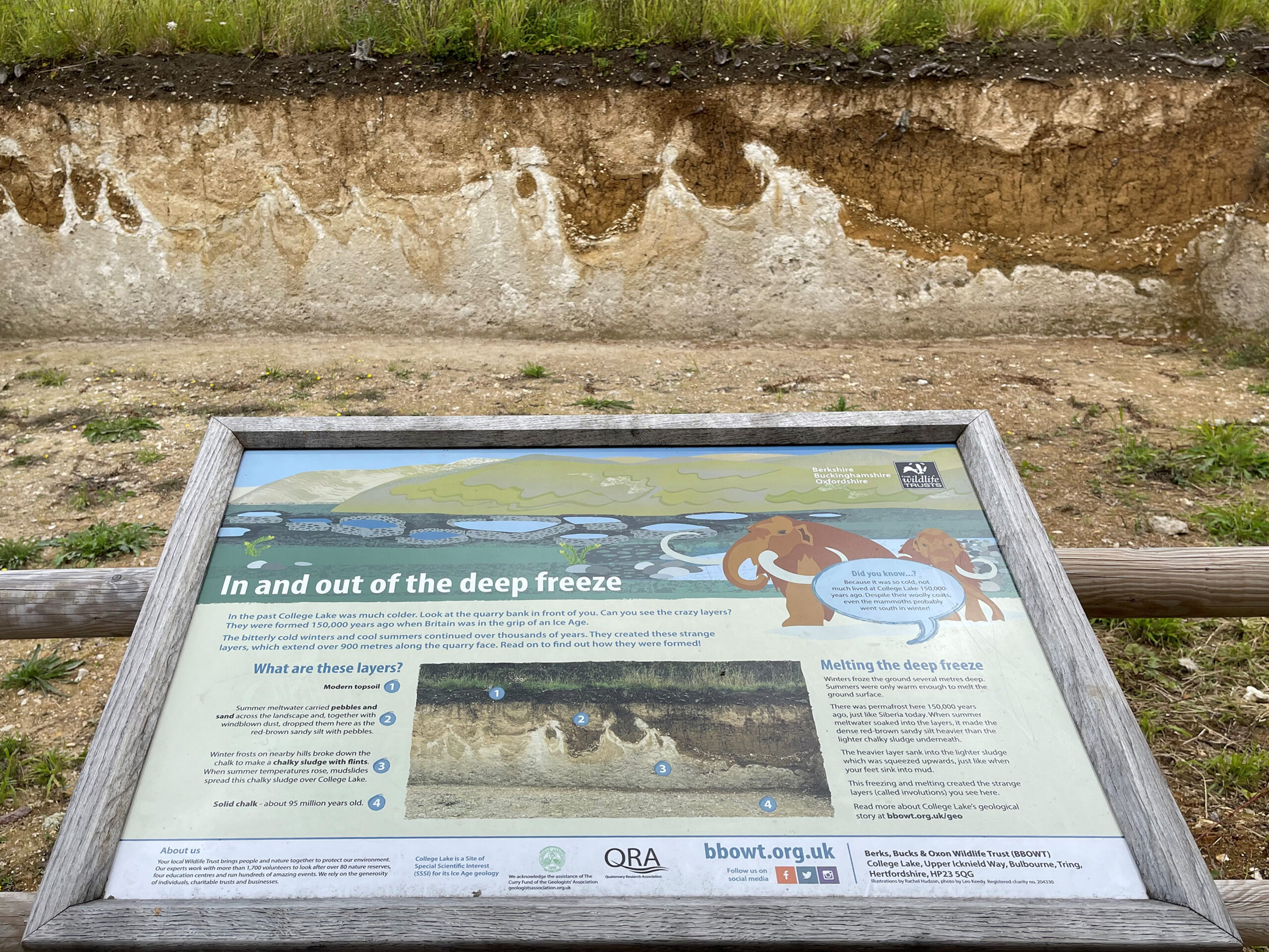Geoconservation values of Quaternary features
Geoconservation is the conservation of those elements of geodiversity that have significant intrinsic, scientific, educational, cultural, aesthetic, ecological or ecosystem service values. Together these elements form our geoheritage.
Recognition of the value of conserving Quaternary features and sites is therefore vital both for the field-based research and education that are essential to advance Quaternary science, and also for the wider benefits for the environment and society.

QRA Geoconservation values:
- Geodiversity is an integral part of nature, and in the same way that plants and animals merit conservation for their intrinsic value, so too do abiotic features.
- Conserving Quaternary sites (geosites) of international, national or local significance for science and education (at all levels from schools to life-long learning) is vital for: current and future research; developing new techniques and theories; educating and training the scientists of the future; and historical value (history of science). Quaternary sites in this category include type or reference localities for particular time periods or events; reference sites for sediments, landforms, deposits or fossils indicative of past environmental conditions; sites with features representative of particular periods of the Earth’s Quaternary history or particular geomorphological processes or landforms, or that are unusual or distinctive; and classic textbook features and landscapes.
- Culturally significant Quaternary sites are places where geological features or landscapes played a role in cultural or historical events, or have close links with archaeology. Aesthetically significant sites include natural features or landscapes that are visually appealing. Many Quaternary sites are tourist attractions and provide economic benefits.
- Geodiversity is a vital component of ecosystems in which biotic and abiotic components form an interacting system. Most species depend on the abiotic ‘stage’ on which they exist, not only rare or specialised ones (e.g. those associated with limestone pavements), and there is a close connection between flora and fauna, the soil and the underlying rocks, and the topography and water and other nutrients on which they depend for growth and survival.
- Geodiversity also provides many environmental goods and ecosystem services that deliver valuable economic, social and environmental benefits for society, including carbon sequestration, water quality regulation, natural forms of coastal defence and assets for recreation. Understanding Quaternary geodiversity and developing Quaternary science to enable benefits for society through understanding and mitigating natural hazards and informing the management of land (including soils) and water (e.g. providing evidence for geotechnical engineering and data on historical flooding); use of Quaternary information on climate and environmental change and forecasting, including rates of change, extreme events and impact on marine and terrestrial systems (e.g. sea-level change); evaluation of past human impacts (e.g. pollution, changes in land use using palaeoenvironmental archives).
The focus of geoconservation is usually on sites (geosites), but may also include museum collections and specimens (e.g. of fossils). Quaternary geosites can be small but scientifically significant areas, such as a disused quarry (e.g. Four Ashes Pit SSSI) or a coastal exposure (e.g. Happisburgh Cliffs SSSI), or extensive areas with landforms, such as the Parallel Roads of Lochaber SSSI or the Cairngorms SSSI. They may be located on privately owned land, or on land in public ownership. Many are vulnerable to a range of threats, including urbanization, infrastructure development, agriculture, aggregate extraction, neglect, erosion or lack of understanding of their value. Moreover, the values of such sites are often underestimated or overlooked in national and local planning and policy.
Protection of Quaternary sites
Quaternary sites in the UK are protected through a variety of statutory and non-statutory designations.
Assessment of nationally and internationally important sites for geoscience research and education in Great Britain was conducted through the Geological Conservation Review (GCR) and in Northern Ireland through the Earth Science Conservation Review (ESCR). The statutory nature conservation agencies (Natural England, Natural Resources Wales and Scottish Natural Heritage) are responsible for providing statutory protection for GCR sites through their designation as Sites of Special Scientific Interest (SSSIs).

Protected Quaternary Sites
Out of a total of c.3000 GCR sites, 564 were selected for their Quaternary interests and a further 301 for geomorphology and geomorphological processes; most but not all have been designated as SSSIs. ESCR sites are designated as Areas of Special Scientific Interest (ASSIs) by the Department of the Environment in Northern Ireland.
Out of a total of c.350 ESCR sites, 114 are selected for Quaternary and geomorphology interests; over half have been designated as ASSIs. Locally important geosites (known as Local Sites or Local Geological/Geodiversity sites in England, as Local Geodiversity Sites in Scotland and as Regionally Important Geodiversity Sites (RIGS) in Wales) do not have the same level of statutory protection as SSSIs. They do not fulfil the strict designation criteria set for SSSIs but are nevertheless of significant value at a regional or local level. They have discretionary protection under planning guidance and their value lies in the fact that they can be designated for a much broader range of criteria than SSSIs, including their educational, aesthetic and historical significance. Many Local Sites include important Quaternary landforms, features and stratigraphy and are often managed by local geoconservation groups. Although not a protected area category as such, Geoparks are areas with outstanding geoheritage established primarily to combine conservation of geoheritage with promotion of geotourism to support sustainable local economic and cultural development. Geoparks may wholly, or in part, include protected areas and help to ensure their conservation.
They may be set up through community-led initiatives or top-down designation. Currently in the UK there are 7 members of the European Geoparks Network (EGN), part of the wider Global Network of National Geoparks or Global Geoparks Network (GGN), assisted by UNESCO. The GGN provides an international framework of accreditation and standards for Geoparks. Geoparks provide opportunities for geotourism, interpretation, research, connecting people to the landscape, and sustaining local economies. The international importance of Quaternary sites and landscapes may also be recognised through their inscription on the UNESCO World Heritage List (e.g. the Jurassic Coast).
For further information, see:
Bridgland, D.R. (2013). Geoconservation of Quaternary sites and interests. Proceedings of the Geologists’ Association, 124, 612-624.
Brown, E.J., Gordon, J.E., Burek, C.V., Campbell, S. & Bridgland, D.R. (2014). Geoconservation and the Quaternary Research Association. In: Catt, J.A. & Candy, I. (eds), The History of the Quaternary Research Association. Quaternary Research Association, London, 405-431.
Burek, C.V. (2012) The importance of Quaternary geoconservation. Quaternary Newsletter, 126, 2533.
Crofts, R. & Gordon, J.E. (2015). Geoconservation in protected areas. In: G.L. Worboys, M. Lockwood, A. Kothari, S. Feary and I. Pulsford (eds) Protected Area Governance and Management. ANU Press, Canberra, 531-568. Available from <http://press.anu.edu.au/wpcontent/uploads/2015/02/CHAPTER18.pdf >
Gordon, J.E., Barron, H.F., Hansom, J.D. & Thomas, M.F. (2012). Engaging with geodiversity – why it matters. Proceedings of the Geologists’ Association, 123, 1-6.
Prosser, C.D., Brown, E.J., Larwood, J.G. & Bridgland, D.R. (2013) Geoconservation for science and society – an agenda for the future. Proceedings of the Geologists’ Association, 124, 561-567.
Gray, M. (2013). Geodiversity: Valuing and Conserving Abiotic Nature. (2nd edition). Wiley – Blackwell, Chichester.
Gray, M., Gordon, J.E. & Brown, E.J. (2013). Geodiversity and the ecosystem approach: the contribution of geoscience in delivering integrated environmental management, Proceedings of the Geologists’ Association, 124, 659-673.
Stace, H. & Larwood, J.G. (2006). Natural Foundations: Geodiversity for People, Places and Nature. English Nature, Peterborough.
